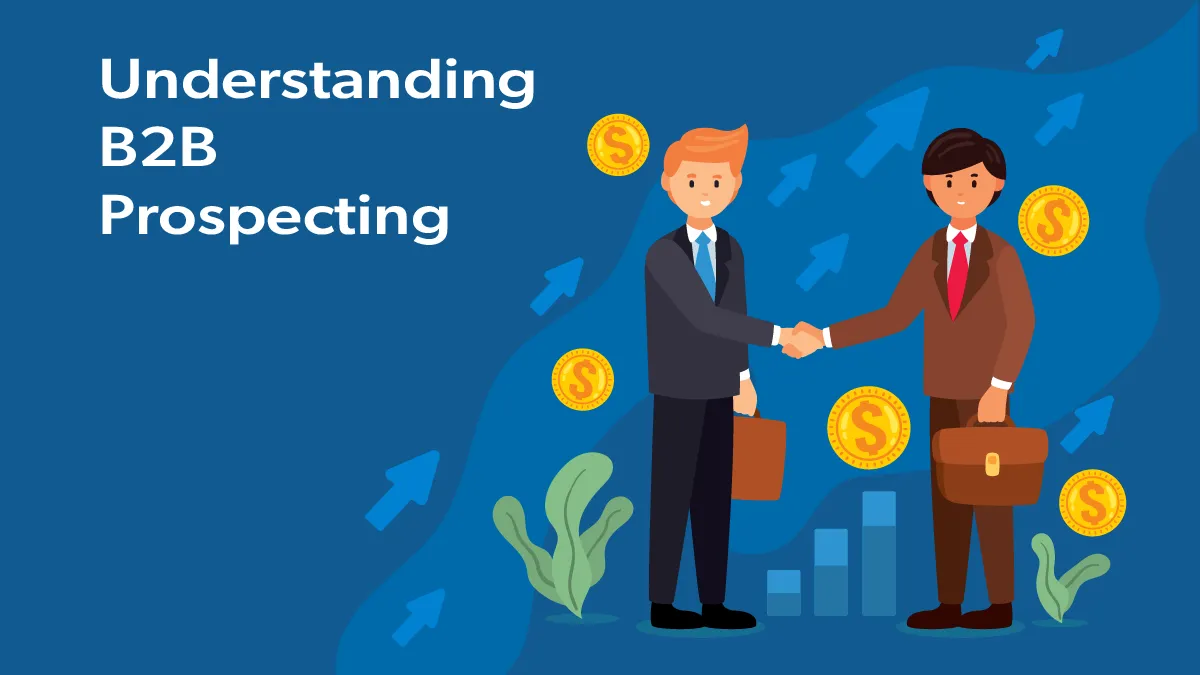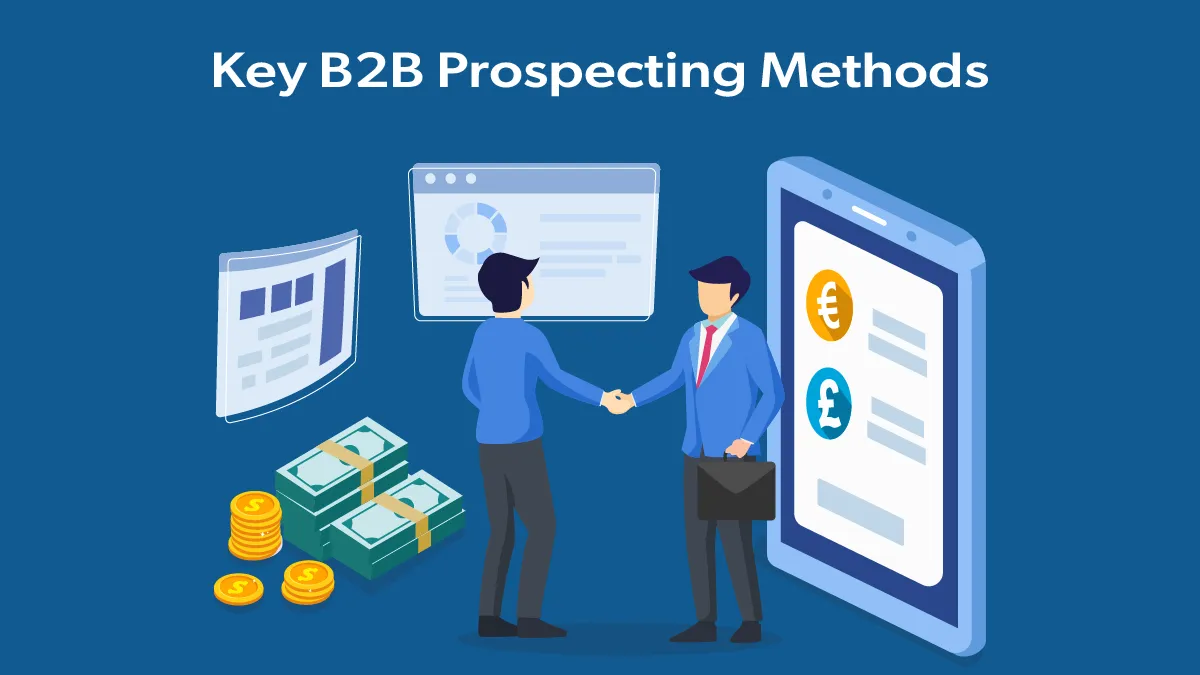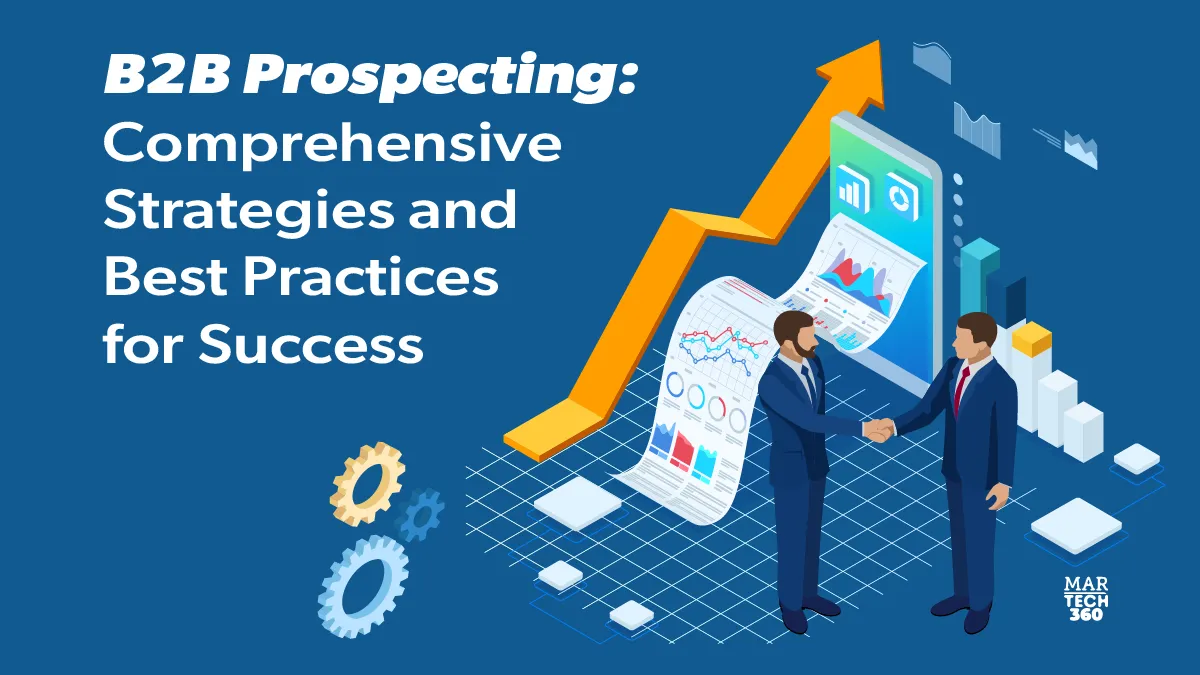In the world of B2B sales, prospecting is critical for building a strong sales pipeline. Usually, B2C interactions encompass single decision-makers to close the deal. B2B selling for a product or service requires engaging multiple stakeholders. These interactions can extend for long periods. Effective B2B prospecting requires sales professionals to identify potential leads. Moreover, they have to build valuable relationships with them. This approach is important to increase the likelihood of successful conversions. In this blog, let us have a look at the best B2B prospecting strategies to ensure success:
Understanding B2B Prospecting

B2B prospecting means identifying and reaching out to potential business clients or customers. B2C prospecting usually targets individual consumers. B2B requires understanding each prospect’s unique business needs and crafting solutions accordingly. This strategic approach supports sustained revenue growth and client loyalty.
Now that you have understood what sales prospecting in the B2B landscape is. Let us now have a look at the best practices to gather high-quality leads for the sales funnel.
Key B2B Prospecting Methods

Given below are a few B2B prospecting methods that businesses can adopt to improve their sales pipeline:
1. Cold Calling
The majority of the leaders have a perception that cold calling is outdated. However, the truth is that cold phone calls remain effective when done properly. HubSpot Research indicates that 70% of sellers connect with buyers through phone calls. It is an opportunity to establish an immediate connection with prospects. The following are the best cold-calling practices to have an efficient sales funnel:
● Research and Personalization:
Callers should understand each prospect’s business challenges to tailor their pitch.
● Clear and Engaging Openers:
Use the first few seconds to capture the interest of potential buyers. The best way to achieve this is by mentioning relevant industry insights or pain points.
● Active Listening:
Cold calling isn’t about sales pitching. It is also about understanding the client’s needs through attentive listening.
Persistence and practice are essential for refining cold-calling skills and increasing effectiveness.
2. Email Outreach
Email remains a top B2B prospecting method due to its accessibility and scalability. Crafting a compelling, personalized email can differentiate you from competitors. Effective email outreach tactics include:
● Subject Line Optimization:
Ensure subject lines are specific and relevant to grab attention.
● Tailored Content:
Address the recipient’s business needs and how your solution can help.
● Clear Call-to-Action (CTA):
Make your CTA clear and easy to follow, whether it’s scheduling a call or viewing a demo.
In 2024, only 8% of B2B marketers consider email their most effective lead generation channel. Industry leaders stress the importance of segmentation and automation tools. These tools are essential for targeting specific client needs and streamlining outreach.
3. Social Selling
Social selling enables sales reps to connect with prospects within their professional networks. Social media platforms like LinkedIn are powerful tools. They help expand the professional network. Key strategies for effective social selling include:
● Providing Value-Driven Content:
Share articles, case studies, and insights that can help prospects address their challenges.
● Engaging in Industry-Specific Groups:
Participate in relevant discussions and forums to establish credibility and visibility.
● Personalized Messaging:
Direct messaging is effective. It should portray genuine interest and knowledge about the recipient’s business.
Social selling fosters trust and connection. This approach results in higher-quality leads and smoother sales processes.
4. Networking Events and Conferences
In-person networking events and conferences are valuable for building relationships. Expanding industry contacts is a key benefit of participating in such events. Strategies for maximizing these opportunities are below:
● Pre-Event Preparation:
Research attendees, speakers, and companies to identify high-priority prospects.
● Active Participation:
Attend panels, workshops, and informal networking opportunities to engage with potential clients.
● Follow-Up:
After the event, follow up with new contacts. Use LinkedIn or email. Mention specific discussions or insights from the event.
Face-to-face interactions at these events create a more authentic connection. You can leave a lasting impression on potential clients.
5. Referrals
Referrals are often the best B2B prospecting strategy to gather the highest-quality leads. Since they come from trusted sources. A recent survey HubSpot conducted involved over 1,000 sales professionals. It revealed that 66% of sales reps believe that referrals from current customers yield the best leads. These high-quality leads are often associated with more effective and productive B2B prospecting efforts.
Leveraging referrals involves:
● Systematic Requests:
Set up a structured system to request referrals from satisfied clients.
● Incentives:
One of the best sales prospecting techniques is to reward referrals. It can motivate clients to recommend your services.
● Referral Programs:
A formal referral program can boost and simplify referrals from clients.
A strong referral program capitalizes on satisfied client relationships. Usually, this results in gathering targeted, qualified leads.
6. Leveraging Technology
Incorporating technology is essential for streamlining and scaling prospecting efforts. Integrate tools like Customer Relationship Management (CRM) systems and automation platforms. A B2B prospecting tool is also an effective tool for developing a strong sales pipeline. These tools allow your sales and marketing teams to organize efficient outreach campaigns. The technology-driven approach includes:
● CRM Systems:
Track interactions, schedule follow-ups, and analyze prospect engagement metrics.
● Sales Automation:
Automate repetitive tasks like follow-up emails, which free up time for personalized outreach.
● Data Analytics:
Leverage data to refine prospecting activity. These strategies can depend on what resonates most with your target audience.
Integrating the right marketing technology enhances prospecting efficiency. Users can gain deeper insights into lead behavior, which allows for better-targeted efforts.
These are the strategies to get the lead in the sales funnel. Let us now look at the best prospecting methods within the sales funnel.
Also Read: Decoding Relationship Intelligence: Definition and Its Importance in B2B Space
B2B Prospecting within the Sales Funnel
B2B prospecting plays a vital role at the top of the sales funnel. The goal is to generate leads and start the journey of converting them into paying customers. Here’s how effective prospecting influences the sales funnel:
1. Top of the Funnel (Awareness):
At the awareness stage, the goal is to introduce prospects to your brand and services. Companies can adopt various B2B prospecting methods like:
- Cold outreach (calls or emails)
- Social media engagement
- Content sharing
Companies can capture potential leads’ attention and bring them into the sales funnel.
Example:
Social selling on LinkedIn is especially effective. This approach creates awareness among relevant industry professionals. It allows a mix of passive (content sharing) and active (direct messaging) prospecting.
2. Middle of the Funnel (Consideration):
Middle-stage prospecting should focus on nurturing leads in the funnel. Here, sales teams should provide more detailed content. It is crucial to engage through personalized follow-ups and continued value sharing. This approach helps build trust.
Example:
Businesses can use email drip campaigns at this stage. These campaigns can be used to stay top of mind with the customer. Organizations can share case studies, testimonials, and success stories. They guide prospects toward making decisions.
3. Bottom of the Funnel (Decision):
At the final stage, B2B prospecting efforts are targeted toward closing the sale. Sales teams work closely with prospects to finalize the deal. They should address specific objections and reinforce value propositions.
Example:
Personal consultations or demos ensure prospects understand how the product meets their needs. It is an effective way to boost conversion rates.
Now lets explore the prospecting approaches in ABM.
Account-Based Marketing (ABM) and B2B Prospecting
Account-Based Marketing (ABM) is a highly targeted approach. This strategy considers each prospective company as its own unique market. Here’s how B2B prospecting fits into ABM strategies:
1. Targeting High-Value Accounts:
ABM strategies begin with identifying high-value accounts. They include the top prospects that align with a company’s ideal customer profile. B2B prospecting in ABM focuses on engaging these high-value accounts individually. This approach uses insights and data to personalize outreach efforts effectively.
Example:
Companies can gather financial and structural insights on target accounts. It enables organizations to have tailored outreach strategies. These strategies resonate with the specific challenges or goals of each account.
2. Personalized Content and Outreach:
In ABM, every interaction is highly personalized. The content crafted directly addresses the pain points of each target account. ABM-aligned prospecting ensures that all touchpoints are relevant and valuable. The following are the ABM-driven prospecting strategies:
- Personalized emails
- Offering specific content
- Organize exclusive webinars
Example: Social selling on LinkedIn becomes a powerful tool here. This tool enables companies to connect directly with stakeholders. It helps businesses share content that reflects the needs of each target account.
3. Cross-Departmental Collaboration:
ABM prospecting often involves collaboration between marketing and sales teams. This collaboration is necessary to deliver a unified, consistent message. Marketing can support sales teams by creating account-specific content. Sales reps can utilize prospecting techniques to initiate and sustain engagement.
Example:
Use CRM data to coordinate marketing and sales activities. It is critical to have each interaction with a prospect aligned with the last engagement. This results in a seamless, cohesive experience.
4. Measuring ABM Success through Prospecting Metrics:
ABM prospecting success metrics focus on the following aspects instead of lead volume:
- Account engagement
- Conversion rate
- Deal size
Track metrics like engagement rate and closed-won deals within each high-value account. It helps refine future ABM strategies.
Example:
Data-driven insights from CRM systems help analyze how prospects engage with each touchpoint. Organizations can make ongoing adjustments to improve prospecting effectiveness within ABM frameworks.
Best Practices for Effective Prospecting
Effective sales prospecting methods rely on a few core best practices. Following are the top practices that ensure outreach remains impactful:
● Consistency in Efforts:
Regular contact with prospects helps maintain brand presence and relevance.
● Focused Follow-Up:
Schedule timely and thoughtful follow-ups. They can close the deals faster to increase conversion rates.
● Measuring Performance:
Track KPIs like response rates, conversion ratios, and engagement metrics. Measuring performance helps to refine and optimize prospecting strategies.
B2B Prospecting in a NutShell
B2B prospecting is a fundamental aspect of a successful sales strategy. It involves having a balanced approach to traditional and modern methods. Each strategy helps build strong, productive relationships with potential clients. Decision-makers should use tech for cold calls and emails to build social ties.
Sales teams should commit to consistent, data-driven, and personalized prospecting strategies. This approach positions them to build trust and drive sales growth. As a result, enterprises can achieve sustained success in a competitive B2B landscape.


Comments are closed.